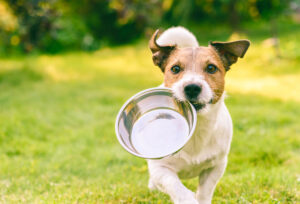
When we adopt a small dog, we want the best in the world for them. That includes getting them the right food. While there are several brands to choose from, we also have to decide what kind of food to give them. Wet dog food and dry dog food are the two main choices, and both have their advantages and disadvantages. Read on to learn more:
Dry Dog Food
Dry dog food is the kind owners give to their dogs the most. And while dry kibble is convenient and affordable, there are some nutritional drawbacks.
Advantages
- Easy to measure out: If your pup is on a diet, then dry dog food is easier to manage and measure.
- Long lasting: Dry dog food rarely goes bad, so you can buy it in bulk to save time and money.
- Less expensive: In general, dry dog food is cheaper than wet dog food (but neither are super expensive)
- Good for dental hygiene: Some brands of dry food help to clean dogs’ teeth, enhancing their dental hygiene.
Disadvantages
- High in carbs: In order to keep their shape, dry food has a low fat content and high carbohydrate content.
- Not great for highly active dogs: Highly active dogs need a greater fat intake than most, so they may not get the required nutrients from dry food.
- Dogs with missing teeth may have trouble eating it: While dry food can clean a dog’s teeth, those with missing teeth will have a hard time chewing dry food.
Wet Dog Food
Wet dog food is tasty and nutritious, but it may not be as convenient to use as dry dog food.
Advantages
- Flavorful: Most dogs are big fans of wet food because it’s tastier and more flavorful than dry dog food.
- Hydrates: Wet dog food is, of course, wet. As such, it’s higher moisture content can help dogs who don’t drink enough or have urinary tract conditions.
- Good for limiting how much your dogs eat: Because wet food is high in moisture, it will fill up your dog’s tummy quicker than dry food. As such, your dog will be less inclined to keep eating.
- High in protein: Wet food has a high protein content, which can help active and younger dogs.
Disadvantages
- Limited shelf life: Wet food needs to be refrigerated, and even then, a can may only last a day or two.
- Won’t clean teeth: Wet food won’t clean your dog’s teeth like dry food, so you may need to be more vigilant about brushing.
- May cause an upset stomach in some dogs: This is not the case for most dogs, but those with sensitive tummies may have a hard time eating all of the moisture, protein, and fat in wet food.
Whether you choose to give your small dog dry food or wet food, Pauley’s Pups will be there to help. Contact us today to learn more!
